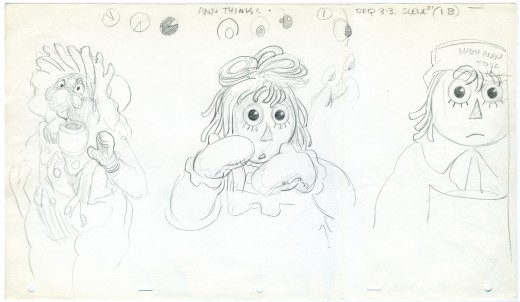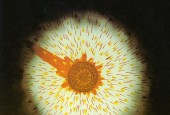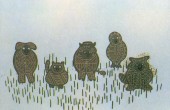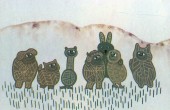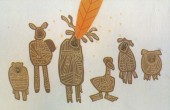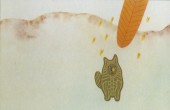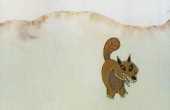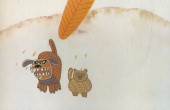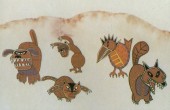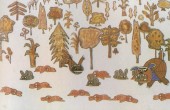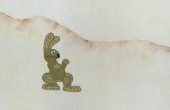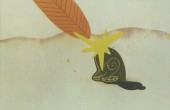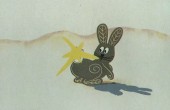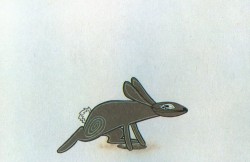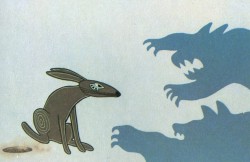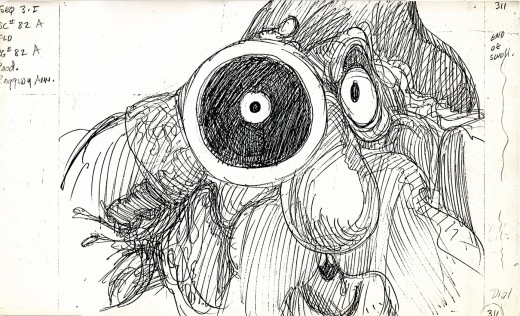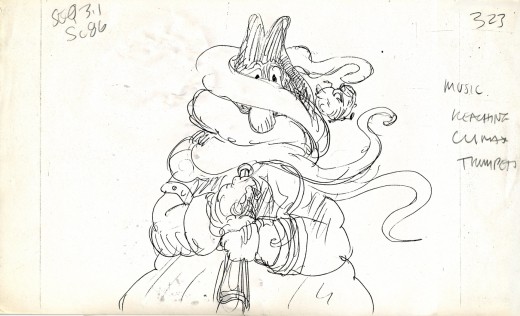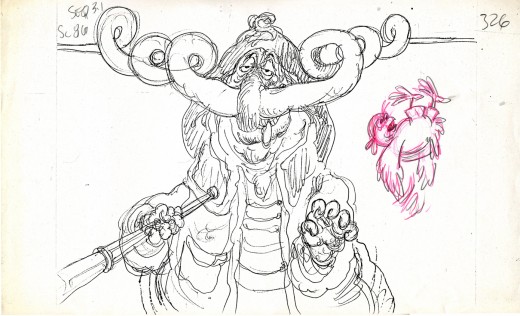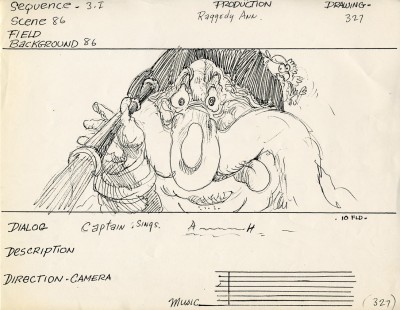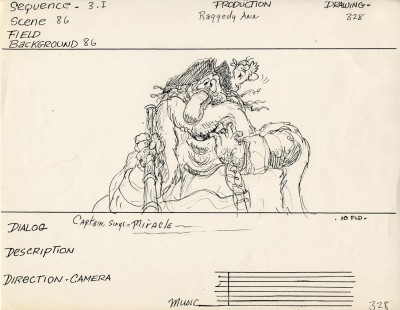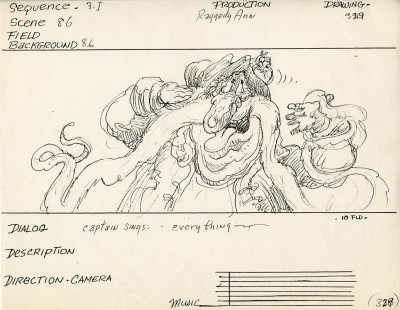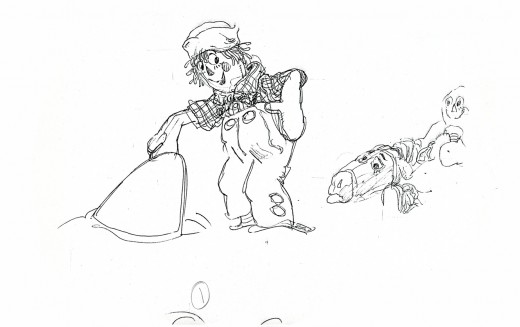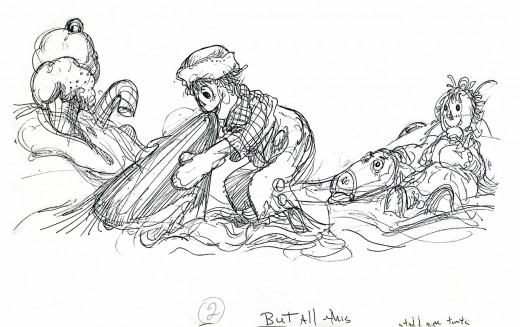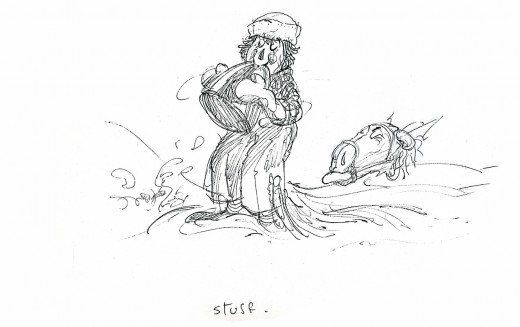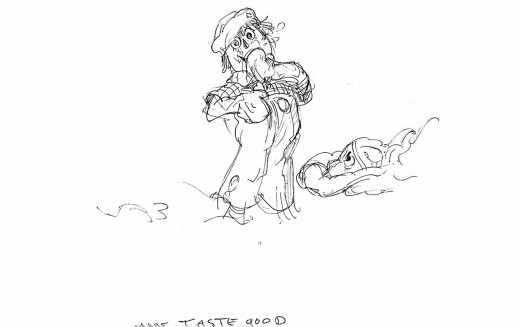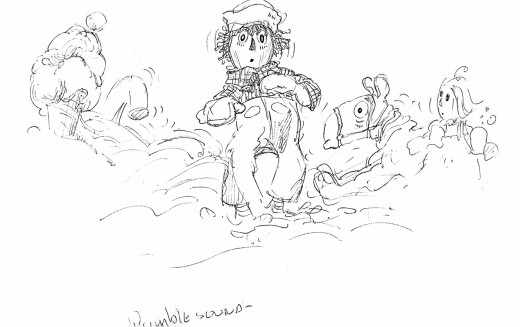Search ResultsFor "corny cole raggedy ann"
Animation &Animation Artifacts &Models &Richard Williams 21 Aug 2007 07:22 am
Raggedy Models
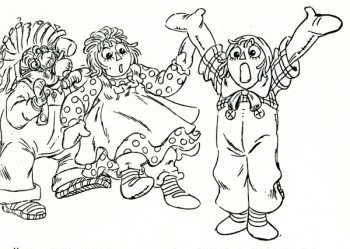 – As I posted last Friday, to celebrate the 30th Anniversary of Raggedy Ann & Andy: the Musical, I’m going to post a bunch of artwork from this film. I’m not even sure much of this material is of interest to anyone but those who worked on the movie, but since I worked on it, I’m interested.
– As I posted last Friday, to celebrate the 30th Anniversary of Raggedy Ann & Andy: the Musical, I’m going to post a bunch of artwork from this film. I’m not even sure much of this material is of interest to anyone but those who worked on the movie, but since I worked on it, I’m interested.
Here are a bunch of model sheets of the secondary characters. The film opens in a playroom, and lots of toys inhabit these first few minutes. They all suffer from the same problem – too much. There are too many lines, there were too many colors, there was too much flailing-about animation. It would have been better to keep it a bit quieter, but that was never the Dick Williams way.
Here they are, right off Xeroxed copies:
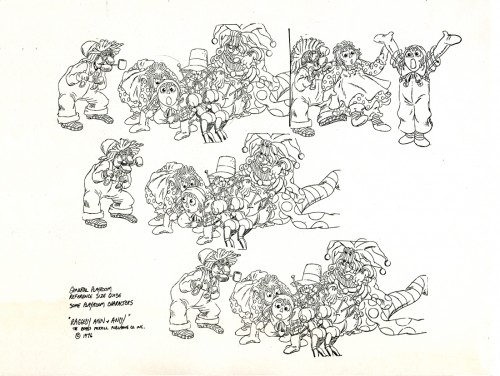
Most of these model sheets were pulled from completed animation. In the case of this
group shot, Dick Williams did these drawings in reworking Fred Helmich’s animation in
the “No Girl’s Toy” musical number.
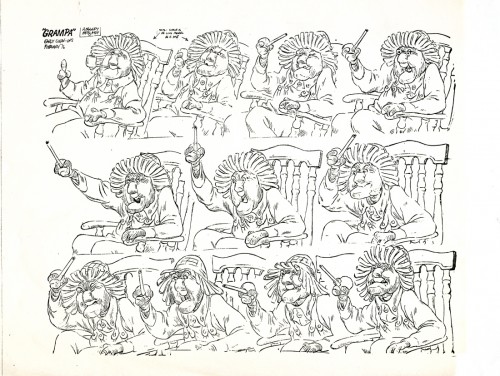
I really have to encourage you to click these images to enlarge. Gramps is the
perfect example of the brilliant detail that Dick Williams put into his animation.
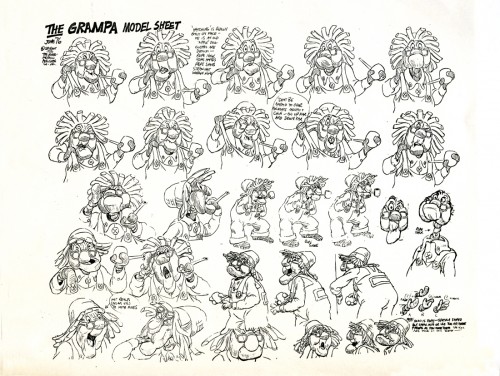
Both these Gramps model sheets represent separate scenes. Most of the key drawings
from the scenes were placed on these models.
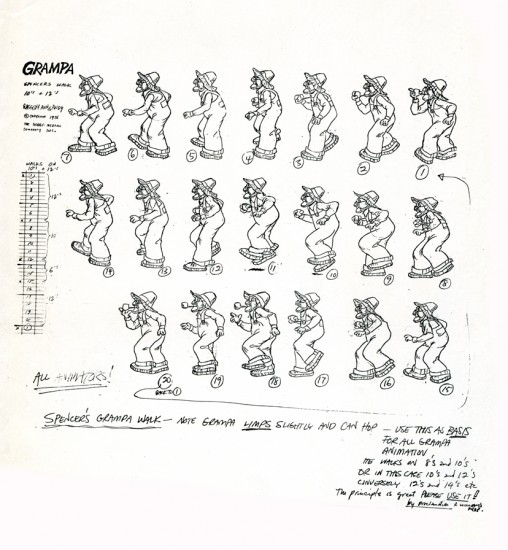
Here’s the walk cycle of Gramps done by Spencer Peel and approved by Dick Williams.
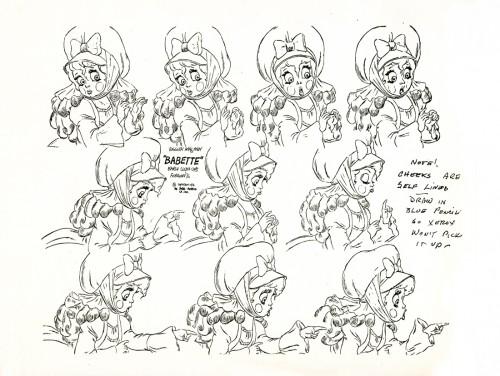
Hal Ambro did the animation on the Babette character, at least in the opening of the film where it was good. Dick Williams did the clean-up and inbetweens, himself.
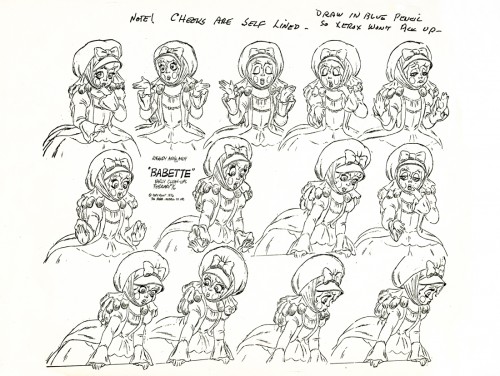
Dick’s clean-up did a stunningly brilliant job of locking in this character. I’m not quite sure we had anyone else on staff who could have done this character as well. Dick Williams is
an enormous talent, but it was too bad he was limited to inbetweening.
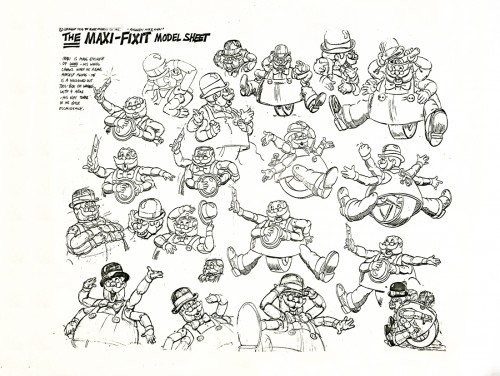
Maxi Fix-it was a nothing of a character, yet he involved endless energy in animation and clean-up. No wonder the film’s budget quadrupled during production, and it wasn’t enough.
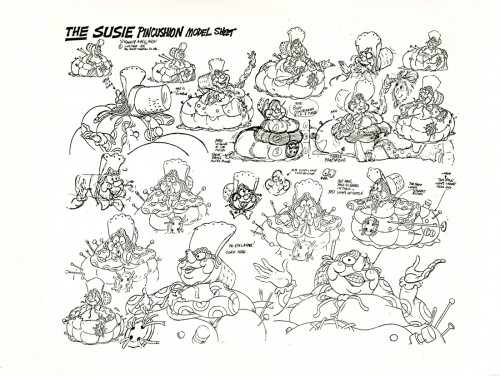
Susie Pincushion was just another character who had 22 colors on her.
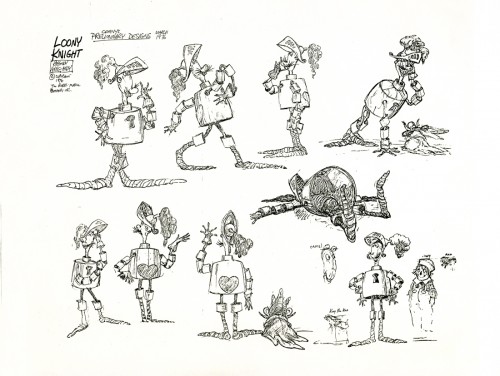
The drawings that were used for this preliminary model sheet were by designer, Corny Cole. What a talent! The character looks as though it could have fallen out of the oriiginal books by Johnny Gruelle. The life in each and every one of these drawings was solid gold. Too bad it ended up such a lifeless and annoying character when it finally hit the screen.
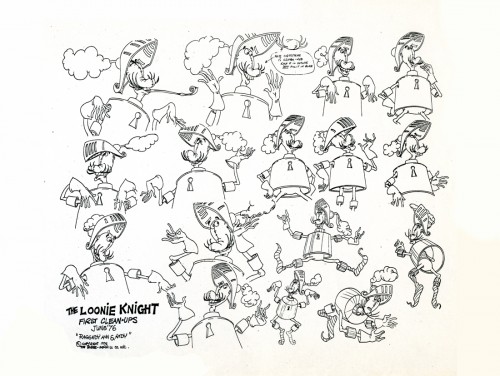
The clean up guide for the knight shows you what’s been lost.
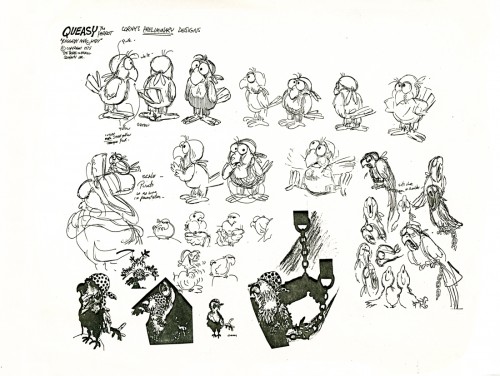
Queasy was the parrot that sat on the Pirate’s shoulder. Arnold Stang did his voice.
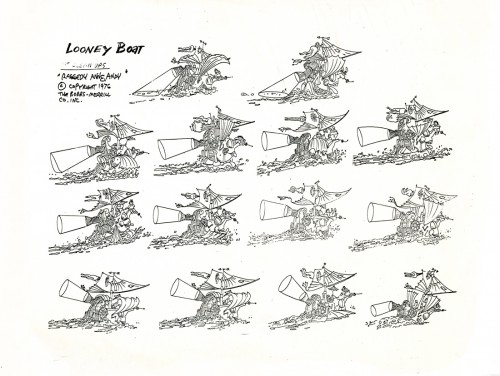
The animation of the pirate ship was split between Corny Cole and Doug Crane. I have
a couple of scenes done by Corny with his Bic pen animation. Someday I’ll post some of these drawings, but it’ll be a big chore to do it. Each drawing is so large that it’ll take three scans for each one and will require photoshop reconsrtuction. Lotsa work.
But they’re beautiful drawings, so it’ll probably be worth it if I can find the time.
Animation Artifacts &Layout & Design &Richard Williams &Story & Storyboards 17 Aug 2007 07:41 am
30 Raggedy Years
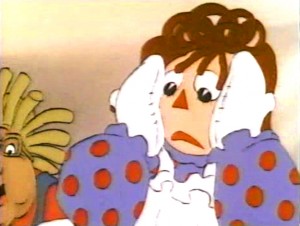 – Tom Sito‘s blog, yesterday, reminded me that it was the 30th anniversary of the release of Raggedy Ann & Andy:A Musical Adventure .
– Tom Sito‘s blog, yesterday, reminded me that it was the 30th anniversary of the release of Raggedy Ann & Andy:A Musical Adventure .
To quote Tom’s blog:
___ASIFA/Hollywood is planning
___to have a reunion of the crew of
___Raggedy Ann to celebrate the
___anniversary. It will be at the
___American Film Institute in
___Hollywood on November 17th.
___A simultaneous reunion will
___happen in New York City. A lot of wonderful people worked on this film, many getting
___their first start.
This gives me a good reason to post some artwork from this film in the next few months. So, excuse me if you find it annoying to see artwork from a second rate feature. However, this was a seminal film for a lot of talented people who got a chance to work along some of the masters.
Just check out this list of animators on the film:
_____Hal Ambro, Art Babbitt, George Bakes, John Bruno, Gerry Chiniquy,
_____Tissa David, Emery Hawkins, John Kimball, Chrystal (Russell) Klabunde,
_____Charlie Downs, Grim Natwick, Spencer Peel, Willis Pyle, Jack Schnerk,
_____Art Vitello, Carl Bell and Fred Hellmich left mid-production.
_____Gerry Potterton was the consulting Director.
_____Cosmo Anzilotti was the Asst. Director.
_____Corny Cole was the designer of the film.
These were some of the younger upstarts inbetweening and assisting:
_____Bill Frake, Jeffrey Gatrall, John Gaug, Eric Goldberg, Dan Haskett, Helen Komar,
_____Judy Levitow, Jim Logan, Carol Millican, Lester Pegues Jr, Louis Scarborough Jr,
_____Tom Sito, Sheldon Cohen and Jack Mongovan.
_____I supervised assistants and inbetweeners in NY,
_____Marlene Robinson did that job in LA.
If you don’t know who these people are, trust me they were the backbone of the business for many, many years prior to 1976.
In some ways I think this along with some of the Bakshi and Bluth films led directly toward the rebirth of animated features. There was a long dark period before it.
So to start with the artwork.
This is a scene which immediately follows the Pirate kidnapping Babette.
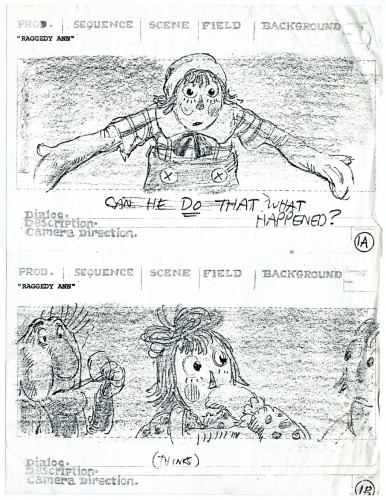
Here’s the storyboard for the two scenes. It’s a copy of
Corny Cole’s drawing from the director’s workbook.
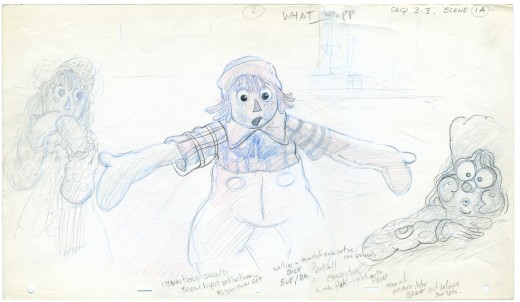
This is Corny Cole’s layout for Sc. 1A.
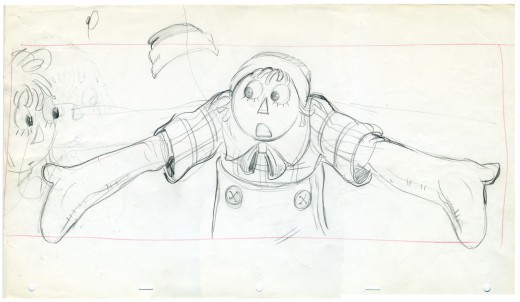
Here we have Dick Williams’ reworking of the same pose.
Fred Hellmich originally animated this, but Dick Williams redid the entire sequence, and
Fred left the film.
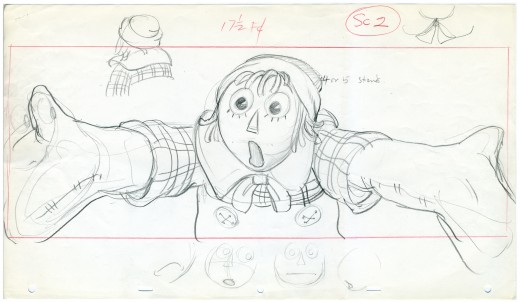
Cut back to Andy (as drawn by Dick Williams) for Sc. 2.
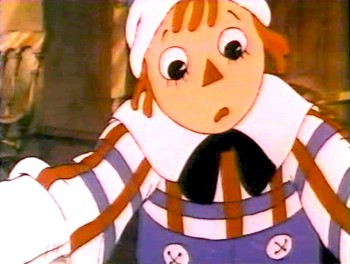
How small it all gets on a pan and scan video.
Animation Artifacts &Hubley 10 Feb 2007 08:44 am
Watership Down Down Down
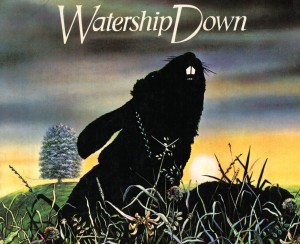 – Yesterday, Mike Barrier expressed some angerl on his site regarding sloppy animation history. He takes to task Stephen Worth and a couple of others.
– Yesterday, Mike Barrier expressed some angerl on his site regarding sloppy animation history. He takes to task Stephen Worth and a couple of others.
I couldn’t agree more with him regarding bad history on the internet. Errors appear everywhere, not just the internet but on these classic dvd’s we buy. (e.g: There’s conflicting information on #3 of the Looney Tunes set’s comment-ary tracks. It’s annoying. Since I particularly trust Barrier‘s accuracy, I went with his version.)
(Click any image to enlarge.)
I give you this information by way of introduction to some probably poor history I’ll present. Everything I offer is guess work. Unlike some others who are overconfident about their guess work, I’m emploring anyone who has conflicting information to let me know so that I can straighten the record and learn the truth, but I do feel somewhat confident.
The subject is John Hubley‘s involvment on the feature Watership Down.
I made some comments a couple of days back about Doonesbury and it prompted a question by David Nethery which started my rambling in response. I decided to add a couple of illustrations, and it’s evolved into this post.
There is no doubt in my mind that Hubley planned and shaped the opening sequence built around aboriginal art. Australian production designer, Luciana Arrighi often gets credit for this. However, I am sure Hubley put it into action and directed it. It’s his style. Perhaps it’s his style by way of Luciana Arrighi, but in the end it came out Hubley‘s.
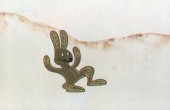
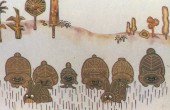
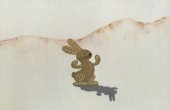
Also obviously his is the guiding spirit of the Black Rabbit of Inle which appears throughout the film particularly after the death of Hazel.
Bill Littlejohn, Phil Duncan, Ruth Kissane, and Barrie Nelson – all Hubley regulars – acted as animator or animation directors on the film. I think they visited the studio in England, but most certainly worked freelance from their homes. A guess – strictly a guess – is that Phil Duncan animated that opening. It feels like his work to me.
I was not in touch with John during this feature or after he had been pushed out of it. At the end of Everybody Rides The Carousel I moved over to Raggedy Ann. Dick Williams had been a hero of mine since the late sixties when I learned of his work. I’d had a number of letters back and forth to his Soho studio, and I contemplated the trip to show him my art. (How much easier everything is with the internet!)
As Carousel wound down, I watched closely as Dick competed for the Raggedy feature. He worked with Tissa David to do a short pencil test of Ann & Andy dancing to a piano score by Joe Raposo. Shamus Culhane was doing the same for Joe Oriolo. The two presentations went solidly Dick’s way, and he got that film. Tissa presented my name to Dick, and I was offered the first staff position on the upcoming feature.
At the same time, John Hubley was offered Watership Down. He had made the comment that he’d like to do the job that Halas & Batchelor had blown with Animal Farm, and he thought this could be the film fo that. This was a very exciting prospect to my ears. However John didn’t want me to go to England. I sure would have followed if he’d asked.
He asked if I would stay in New York and manage his studio there. He thought it might be possible to do some work in New York while he did the film in London. We even negotiated a very meager salary (John was the tightest guy I knew. He’d faced bankruptcy several times and watched his money closely.) Ultimately, watching what was about to happen half a mile away was too enticing for me. I wanted the chance to work with Dick Williams who had already brought on board Art Babbitt, Emery Hawkins, John Kimball, Gerry Chiniquy, Corny Cole and others. My allegiance was more with Tissa by this point, and I made my decision.
So, my analysis of the scenes I see is based solely on my love of Hubley’s work. I’ve inbetweened and inked and colored thousands of Phil Duncan’s drawings and scenes, and I’ve designed for John Hubley knowing full well that every drawing I was to do under him came out looking like a Hubley film. (John was the best artist I’ve ever met, so no one, in my opinion, could match what he could do with the simplest of lines.) I think my speculation on these short scenes in Watership Down is correct. I hope anyone won’t prove me wrong, but there it is.
There’s a very nice piece on the web by Richard Bell about his work in BG’s under Hubley and Martin Rosen.
There’s also an extensive and very insightful piece by Chris Boyce with analyzes the film in depth. He tries hard to separate what might be Hubley’s from Rosen’s.
Animation Artifacts 14 Oct 2006 08:23 am
More Corny
- My recent posting of art from Raggedy Ann & Andy prompted John Celestri to send me this clipping from the Cincinnati Enquirer re the kidnapping of Ann & Andy.
- Here are some more of Corny Cole‘s story board drawings from Raggedy Ann & Andy.
This first Layout marks the introduction of Raggedy Andy. He’s under the box. This drawing gives you a good idea of the detail Corny put into every drawing.
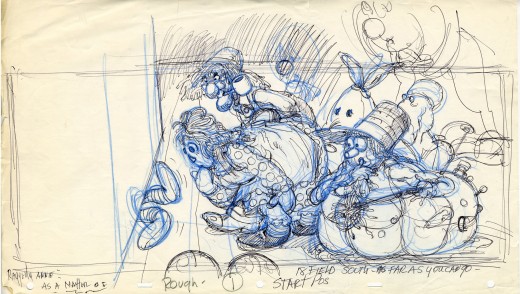
(Click on any image to enlarge.)
The following images come from the first shots of the Pirate Captain. He espys the new doll, Babette, and falls madly in love.
The first four stills are 8.5×14 copies of the storyboard; the remainder come from the director’s workbook. They’re all sequential.
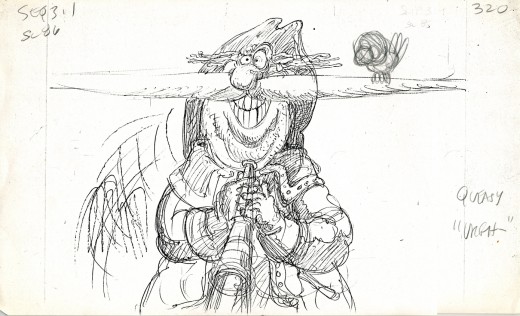
I think the parrot, which was added in pencil, is the work of Asst. Director, Cosmo Anzilotti. The bird just shows up later, so Cosmo probably tried to give him some business.
It’s here that the Pirate goes into his song (everybody sings in this film) and concocts his plot to kidnap the French doll.
Animation &Animation Artifacts &Richard Williams 12 Oct 2006 07:54 am
Andy & Corny
- Seeing the models David Nethery posted on his site, You’re A Gazelle, in his comments on Tissa David‘s work from Raggedy Ann, started me thinking about the Dick Williams‘ film. As I noted, yesterday, I have quite a bit of artwork from the film, and I thought I should post some.
I think in ways, the unsung hero of Raggedy Ann was Corny Cole. He was there from day one working with Dick and Tissa – once the one minute pilot had gotten the job for Dick. Corny was brought in as the key designer, and Gerry Potterton came on as Dick’s Associate Director.
I was hired soon thereafter, even though I had no idea what I’d be doing. For the first couple of weeks, while they were recording, I just moved furniture and read the script and whiled away the time by drawing Johnny Gruelle‘s characters.
I helped Dick and Gerry add spot coloring to the storyboard as the animatic was being shot. We spent a long Saturday coloring like mad with colored pencils. We worked on the last section of the animatic to be shot. I’d say 90% of the board was done by Corny. Dick and Gerry added spot drawings as needed, while we built the animatic.
Corny then did lots and lots and lots of drawings to give to animators.
Some of those drawings are posted herein for a scene at the beginning of the “taffy pit” sequence. These drawings were also used in the animatic.
After Corny finished feeding the animators, he started animating, himself. He took on a sequence that filled the screen with a pirate ship full of dolls floating around some rough waters. The large sheets of paper were filled with Corny’s black bic pen lines. Doug Compton eventually worked with Corny to finish this overworked sequence.
